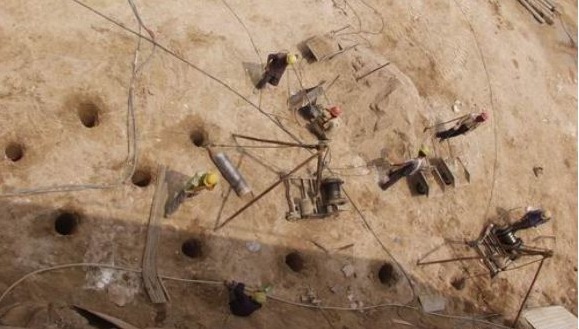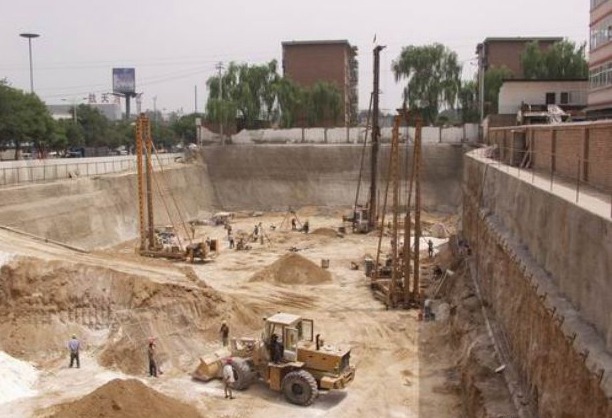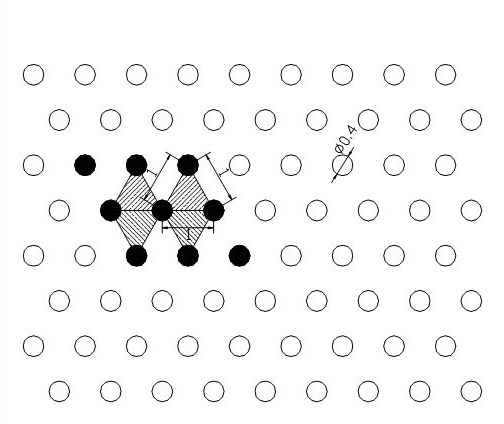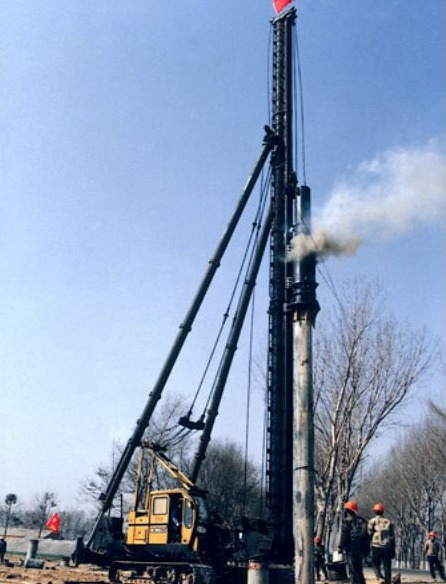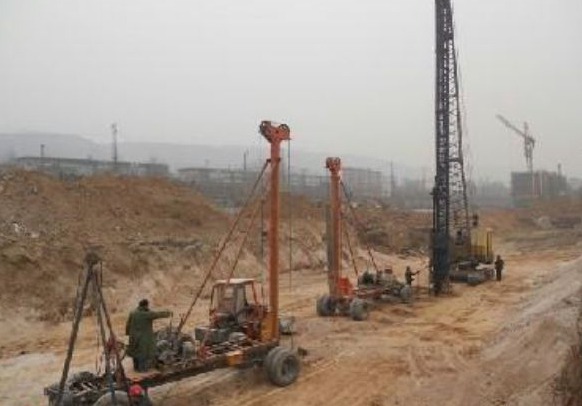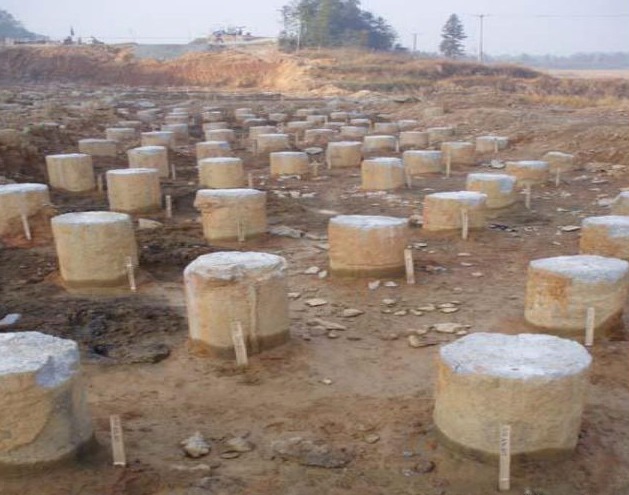1. What is a lime-soil compaction pile?
1. Lime soil column
Using the lateral extrusion during the hole-forming process, the soil in the pile hole is squeezed into the surroundings, so that the soil between the piles is compacted, and then the lime soil or plain soil (cohesive soil) is filled into the pile hole in layers and tamped layer by layer. Fill tightly to the design elevation.
2. Cement fly ash gravel pile (CFG)
After drilling with a long spiral drill or forming a hole with an immersed pile machine, cement, fly ash, gravel, and stone chips are mixed with water, then pumped or put into the hole through a lower hopper and poured into the pile body.
2. Scope of application
1. Lime soil compaction pile method
It is suitable for treating collapsible loess, plain fill soil, miscellaneous fill soil, and other foundations above the groundwater level. The depth of the foundation that can be treated is 5 to 15m. However, when the moisture content of the foundation soil is greater than 24% and the saturation is greater than 65%, it is not appropriate to use the lime soil compaction pile method or the soil compaction pile method.
The lime soil compaction pile and soil compaction pile methods have the characteristics of in-situ treatment, deep compaction, and soil control. They are widely used in the treatment of deep collapsible loess, plain fill soil, and miscellaneous fill soil in the northwest country and North China. When used as a foundation, it has good economic and social benefits.
2. Cement fly ash gravel pile
Cement fly ash gravel pile composite foundation is a rigid pile composite foundation, that has the advantages of a large increase in bearing capacity and small foundation deformation. And it can be applied to a variety of foundation forms: strip foundation, independent foundation, box foundation, raft foundation, etc.
The CFG pile method is suitable for treating foundations such as clayey soil, silt soil, sandy soil, and plain fill soil that has been consolidated by its weight. For silt soil, its applicability should be determined based on regional experience or through field tests.
3. Construction plan
1. Test pile
Before ramming and filling construction, a ramming and filling process test should be carried out to determine the reasonable amount of divided filling and the number of ramming blows. Through hole formation, ramming and filling technology, and squeezing effect testing, various parameters such as pile filling height and ramming times are determined to meet the design requirements of pile compaction coefficient not less than 0.97 and soil compaction coefficient between piles not less than 0.90. , to guide large-scale construction.
2. Arrange piles
According to the designed pile position layout plan, the construction stakeout is fixed, and each pile position is accurately set out through the coordinate control points, and the point marks are made with lime dots. Construction will start after verification, and construction records will be kept.
There are plum blossom piles, triangular piles, and parallel piles.
3. Hole Formation
The hole formation sequence adopts the method of jumping 1 to 2 holes from the center of the route to both sides. Once a hole is completed, a cover plate is used to cover an empty hole. When the hole is formed, a dedicated person will keep records.
The pile driver is in place to make it flat and stable. The hanger lifts the pile pipe, aligns it with the pile position, and presses it into the soil through hammering and the pile pipe’s weight.
When the pile tip just touches the surface, use a low-down tap. After the pile tip is 1 to 2 meters into the soil, hammer the pile pipe to the designed depth using a predetermined speed and pitch.
During the hammering process, the verticality of the pile pipe should be checked frequently, and any inclination should be corrected immediately.
When the immersed pipe reaches the designed depth, stop hammering, close the throttle, and pull out the pipe at a uniform speed to prevent the pipe from bonding with the soil layer, making it difficult to pull out or causing the hole to collapse.
When squeezed holes occur during the hole-forming process, they should be re-drilled at intervals to avoid missing points.
Hole detection, including pile diameter, pile spacing, hole depth, and construction records should be kept.
4. into piles
The lime soil is mixed evenly, and after self-inspection and passing the inspection by the supervision engineer, it is transported to the site with a small forklift.
The sequence of backfilling and tamping of pile holes shall be from the center of the route to 1 to 2 holes on both sides.
The shape of the rammer is a pear-shaped hammer with a parabolic pituitary shape at the lower end. The weight of the hammer is 100kg and the diameter of the rammer is 280mm.
Before backfilling each pile hole, use a hammer to tamp the bottom of the hole, and backfill and tamp it in layers. The depth of a single pile can be easily 30 to 40 cm. Filling and tamping are performed alternately to complete the construction of a single pile.
When backfilling, the material should be discharged evenly and tamped evenly to ensure the distance and number of heavy falls of the tamping hammer.
After the backfill is compacted until the top surface is 10cm higher than the design elevation, it is capped with plain soil.
5. Detection test
After the piles are formed, samples should be taken to inspect the quality of the lime-soil compaction piles or soil compaction pile-treated foundations promptly. It mainly checks the construction records, detects the dry density of the pile body and the soil between the piles in all treatment depths, and converts it into the average compaction coefficient and the average squeezing coefficient. The number of sampling inspections should not be less than 1% of the total number of piles for general projects, and should not be less than 1.5% of the total number of piles for important projects.
When the lime soil compaction pile or soil compaction pile foundation is completed and accepted, the bearing capacity test shall be carried out using the composite foundation load test. The number of inspections should not be less than 0.5% of the total number of piles, and each single project should not be less than 3 points.
Thanks


